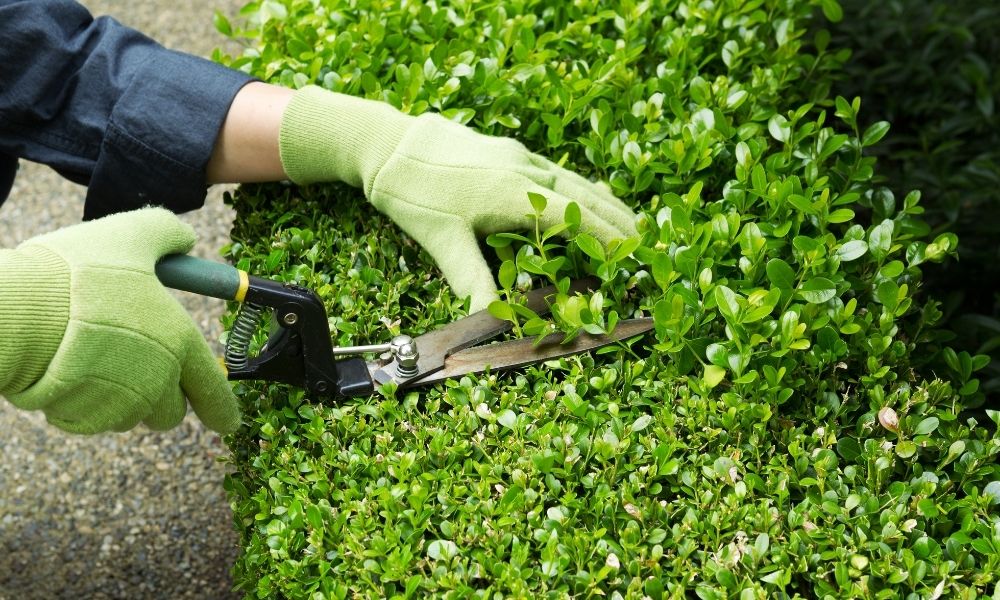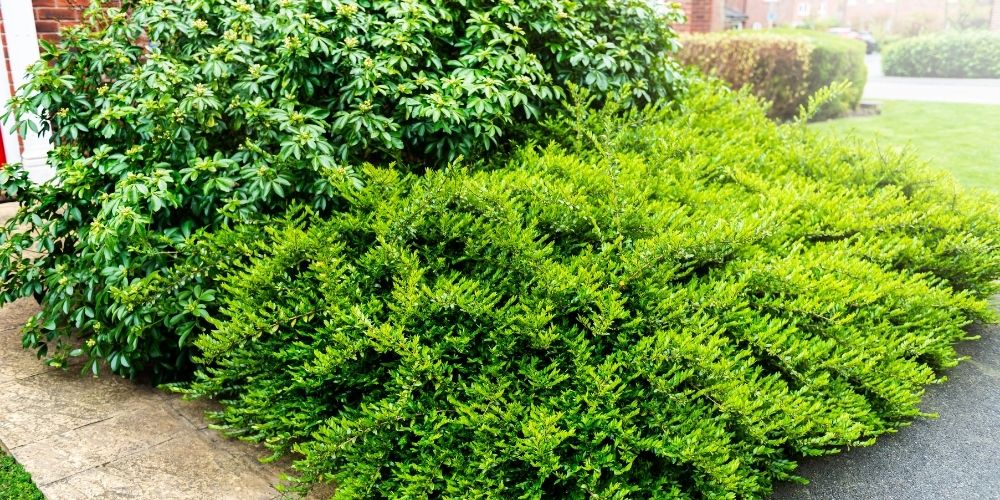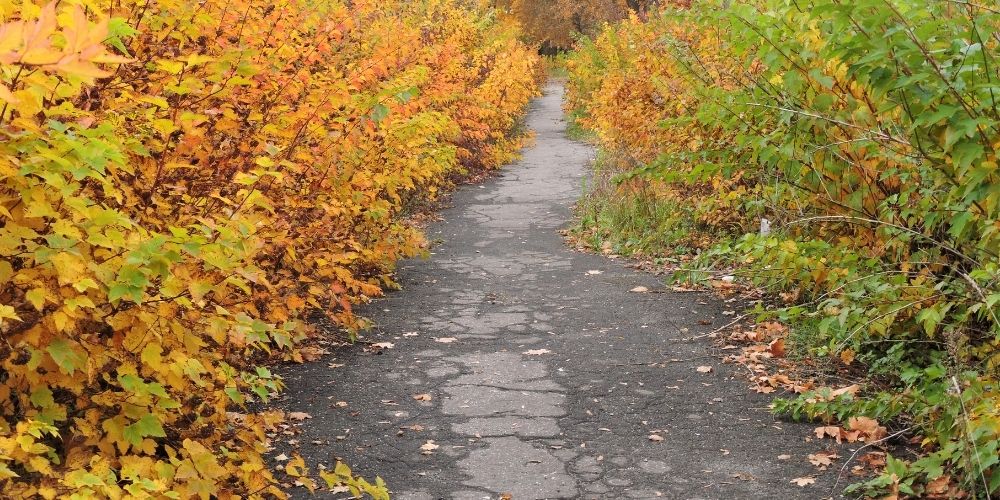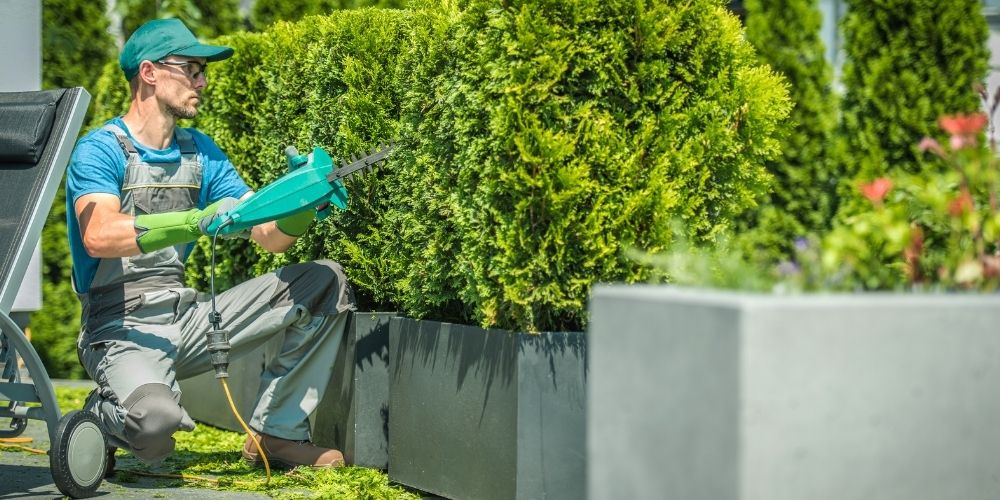
Learn the Best Ways on How To Trim Overgrown Bushes
Bushes need trimming every couple of years. When they don’t get regular maintenance, they become overgrown and leggy. If you want to know how to trim overgrown bushes easily, we invite you to keep reading this blog.
How to Trim Overgrown Bushes: Easy Steps to Achieve Beautiful, Healthy Greenery

To properly trim a bush, you need to do it with the necessary care and knowledge to avoid damage.
Learn how to trim overgrown bushes by following these four easy steps:
- Layout a tarp for an easier and more efficient cleanup
- Trim strategically to keep the bushes lush and healthy
- Assess the bush shape
- Follow the ⅓ rule for better results
Layout a Tarp for an Easier and More Efficient Cleanup
Laying out a tarp will allow you to clean up easier any mess you make when trimming bushes.
Trim Strategically to Keep the Bushes Lush and Healthy
Remove any growth you don’t want around the bushes, and thin out any remaining spots on the outer cover. Keep in mind that inner limbs need sunlight and air circulation to stay healthy. Cutting along branches above the new growth will help you achieve good trimming.
You should also remove any suckers and water sprouts at sight, as they take away the plants’ nutrients.
Assess the Bush Shape
Remove all the dead limbs near the shrub’s base. When possible, try to balance the top of the bush with the ground to absorb sunlight equally. That will allow new growth and make the shrub stronger and fuller. Experts recommend cutting ⅓ of the shrub per year.
Trim above the “branch collar,” a small ring of bumpy tissue at the intersection of a branch and the primary trunk. The rough area consists of a lot of plant growth cells. Leaving the collar in place allows your bush to be callous over and heal from the procedure.
Follow the ⅓ Rule for Better Results
Moderate pruning stimulates new, vital growth in bushes, shrubs, and small trees. Plants exist in a state of balance among above-ground and below-ground parts.
When the plant loses a significant number of stems, especially at the highest point, it attempts to restore the balance by pressing forth new growth to keep the top green space in harmony with the nutrients and water pushed into it by the root system.
In moderate amounts, this regrowth is beneficial. It is how plants recover. Moreover, trimming can boost growth from dormant buds.
Whenever a plant loses almost all its leafy growth, it enters a state of shock or panic. At this moment, it may attempt to regenerate from suckers or water sprouts, which can leave the plant looking ragged. Suckering has a habit of continuing once it begins.
On the other hand, too little pruning has little effect on boosting the growth process. While this may provide some slight shaping to the plant, timid pruning will not generate new stem growth in the same way that a good 1/3 pruning does.
Pruning Shrubs Technique
“Heading back” is a technique that many experts use to give the bushes and shrubs a natural look. It consists of locating the bush’s main branch and following till it meets a lower side branch that points upwards. Once you do this, cut the main stem just above the other one, and repeat the process with the rest of them.
Shrubs and bushes are distinguished from other plant species by their numerous stems and lower height. Even though bushes and shrubs are perennial, some varieties can reach heights of 15 to 20 feet. Thereby, pruning overgrown bushes and shrubs is necessary for maintaining plant health and the aesthetic design of the garden.
Another method for pruning overgrown deciduous trees and bushes is to chop them down to 4 to 6 inches from the ground in March or early April. And during the growing season, this severe trimming will cause many shoots to develop.
Best Time to Prune Overgrown Shrubs and Bushes

Many people trim their bushes to keep them looking good and healthy. However, when left untrimmed for an extended period, they become overgrown and unattractive, making them an easy target for diseases and pest infestations.
It is vital to cut back bushes to rejuvenate them and help them grow healthy. Although you can trim bushes at almost any time of the year, there is a better time recommended for cutting. Late winter and early spring are the best times to trim a bush.
It is crucial to avoid trimming new blooms or buds after the dormant season. Even when the late winter and early spring are the best time to prune a bush, you can also do this when summer is over.
Species Determine the Best Time To Prune a Plant
- Prune early-spring flowering shrubs immediately after blooming.
- In the winter or early spring, cut back summer flowering plants.
- You can prune non-flowering plants once new growth has appeared.
Bear in mind that when you neglect a bush or shrub for an extended period, it can become so overgrown and out of control that regular trimming is no longer sufficient. Some professionals suggest a very severe form of trimming known as “rejuvenation pruning” for such evergreens. That entails removing the entire bush at the height of six to twelve inches above the soil surface.
Get Professional Assistance Whenever You Need It

Now that you know how to trim overgrown bushes properly, it’s time to get to work. However, if you require professional help, we invite you to read about the benefits of hiring a professional trimming company. To get our trimming services, give us a call, and we’ll set an appointment.



